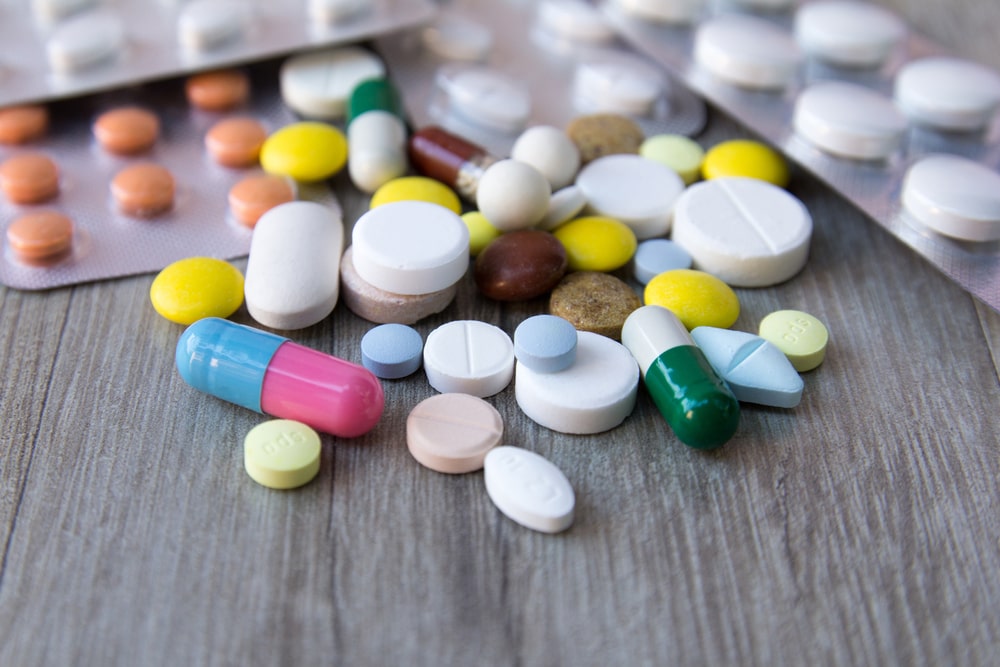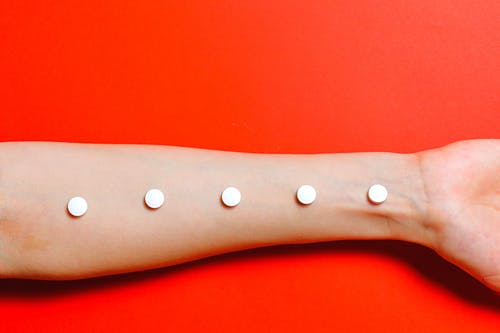
When people hear the words, “drug detox and withdrawal,” they’re usually thinking about what happens when a person quits taking an illegal street drug. The withdrawal symptoms that manifest in things like heroin or cocaine addiction can be intense, long-lasting, and particularly unpleasant. But many people mistakenly believe that because a drug is legal and prescribed by a doctor, prescription medications can’t be addictive or cause withdrawal symptoms. But that’s not true. Dozens of prescription drugs can cause the body to build a tolerance and dependence on the medication, and when people try to quit, they can experience prescription drug withdrawals.
Recent surveys on prescription drugs have found that 119 million people in the U.S. use a prescription medication, with over half of all people older than 12 taking one as prescribed by a physician. The most common types of prescription drugs that Americans use are pain killers, sedatives or tranquilizers, and stimulants. Unfortunately, 16% of the time, people misuse their medications. These national surveys have found that nearly 19 million of the 119 million who take prescriptions in the U.S. abuse the drugs. But it’s important for consumers to understand that they can take prescription medication as prescribed exactly by their doctor, and still experience withdrawals.
What happens during prescription drug withdrawals?
When someone starts taking a substance, their body will build up a tolerance to it over time. Tolerance happens when a person needs to keep taking more and more of a drug to get the same desired effect. In some cases of prescription medication, tolerance can happen quickly, as is the case with many opiate-derivative medicines. But some medications come with a lower risk for tolerance and dependence.
Dependence occurs when a person’s body needs the medication to function. Even substances as common and safe as caffeine can lead to tolerance and dependence. Prescription drugs are no different. When the body doesn’t get the required level of drugs needed to function “normally,” the individual will experience withdrawal symptoms. When someone is both physically and mentally dependent on a substance to function, it’s a form of addiction.
What are the different types of pharmaceutical withdrawals?
Common prescription stimulants include drugs like Ritalin and Adderall. These drugs are commonly prescribed for ADD, ADHD, and narcolepsy. Drugs like Adderall are classified as schedule two drugs. A schedule two drug, according to the DEA, has medical benefits, but it also comes with the risk of abuse and addiction. Unfortunately, people will abuse prescription stimulants for increased energy, focus, and euphoria.
When someone takes a prescription stimulant, it increases their ability to focus. People with narcolepsy can stay awake when taking a prescription stimulant. But if someone tries to quit taking a prescription stimulant cold-turkey without a doctor’s supervision, they will experience fatigue, confusion, and they can also develop depression.
Millions of Americans struggle with anxiety, sleep issues, and insomnia. Prescriptions sedatives are incredibly powerful medications that are intended to help people with insomnia fall asleep, or stay asleep, and also lessen the severity of a person’s anxiety. Anxiety and insomnia are incredibly distressing and disruptive disorders. While these medications are incredibly useful for treating insomnia and anxiety symptoms, they come with a high risk of dependence and abuse. For people who take these drugs, they are typically only prescribed for a few weeks to lessen the chances of addiction.
Usually, physicians will prescribe safer SSRI and SNRI medications for these disorders, which are safer to take long-term. Prescription sedative withdrawals can include a worsening of anxiety symptoms, and rebound insomnia which is incredibly challenging to alleviate. High blood pressure, vomiting, and hallucinations can also occur during the sedative withdrawal timeline.
Prescription narcotics have an incredibly high risk of abuse and are typically used to treat acute instances of pain. Unfortunately, opiate-derivative drugs will completely hijack the brain’s risk and reward system, leading to increased tolerance, dependence, and ultimately, addiction. Withdrawal symptoms for prescription painkillers include agitation, and stomach upset, sweating, tremors, and muscle spasms. Intense cravings for the drugs can last for months after initial cessation.
What is the detox process like for prescription drugs?
When someone takes a prescription drug for a legitimate medication condition, their body will develop a tolerance and a dependency on the medication. This isn’t necessarily indicative of substance use disorder. In many cases, it’s not safe for the patient to quit taking the medication abruptly. Doing so can cause severe and intense withdrawal symptoms. In some cases, this can be potentially dangerous. For patients who want to stop taking a prescription medication, a medically-supervised detox is usually recommended.
During a medically-supervised detox, the patient is monitored by trained medical staff for severe withdrawal symptoms. Doctors also create a tapering-off schedule for the patient. Slowly decreasing a person’s dose of the medication is a safer, more effective way to overcome the withdrawal and detox process. It gives the body time to become acclimated to operating without the substance in the person’s system. This will lessen the intensity and duration of withdrawals.
When and why should someone seek professional help for prescription drug withdrawal symptoms and detox?
People may want to stop taking prescription medication for many reasons. They may wish to try alternative treatment methods, and for women, they may want to become pregnant and breastfeed a baby. Many prescription medications are not safe for pregnancy and nursing. A person can be dependent on a prescription without being addicted. But regardless, quitting a prescription drug under a doctor’s care is a safer, more effective way to clear the body of the substance. In cases of addiction, medical detox and rehab can lessen withdrawal severity, and also give patients the tools and education they need to prevent a relapse.
In a 2015-2016 survey, almost half of all Americans reported using a prescription drug within the past 30 days. That estimate included 18% of children under 12 and 85% of adults over 60. Some of the nation’s leading hospitals, however, are also embracing the theory that the body heals best when all of its components are in balance. Dependence and addiction are examples of what happens when the mind, body, and spirit aren’t working together.
Homeostasis and Addiction
Whether it’s a cup of coffee or your morning run, you probably don’t feel up to par if you miss your daily fix. The tendency of your body to maintain a stable environment that allows it to function efficiently and survive is called homeostasis. When your blood sugar changes drastically, your body temperature rises, or your pain pill is taken away, you experience symptoms of withdrawal.
The brain’s job is to monitor and maintain the process of homeostasis, adapting to inner and outer stimuli. Because drugs like Xanax and opioids change the brain’s chemistry, they create an imbalance that leads to addiction. The addiction overstimulates specific areas of the brain and makes it harder for the body to maintain its equilibrium.
Think about it like a seesaw. Certain prescription drugs trigger the release of feel-good hormones in the brain’s reward center, weighing down one side of the seesaw. Gradually, the hormones slow down, and the seesaw returns to normal. If the drug is stopped suddenly, the seesaw falls in the other direction. The substance no longer stimulates the brain, and mood swings occur.
To restore balance, the brain sends out signals that create the desire for more drugs, make it harder to quit, lead to risky behavior, and cause a lack of interest in normal activities. Both Xanax withdrawal and opioid withdrawal may also cause cognitive and physical problems.

A Holistic Approach to Addiction
Some Southern California rehab centers use a holistic approach that addresses the issues that triggered addiction and looks for healthier ways to manage physical and emotional symptoms. Although prescription drugs can cause dependence, underlying issues like PTSD or depression often make matters worse.
Treatment is more successful when it integrates spiritual, physical, and mental components in recovery. Included are practices like family therapy, support groups, healthy diet, and exercise. Complementary practices like these make it easier to deal with opioid and Xanax withdrawal and rehab:
Southern California Rehab for Prescription Addiction
With locations in Santa Barbara and additional parts of Southern California California, Mission Harbor Behavioral Center offers mental and addiction treatment for adults and adolescents. Outpatient, inpatient, and telehealth tracks make it easy to find a program that fits every individual’s specific needs. Our experienced team knows how to treat Xanax and opioid withdrawal, integrating care for emotional and physical aspects of addiction. Contact us today to get on the path to recovery.
Updated 3/31/2021
The facilities at Mission Harbor are staffed with trained experts to best assist patients with their mental health issues. We are capable of dealing with any and all cases with a licensed staff, equipment, and approved techniques. Our mission is to help those who want to help themselves, and we support your decision in seeking help.
Get Help Now
Alcohol addiction is extremely difficult to overcome on your own.. Seek specialized help and let professionals guide you in your recovery.

